Tug-of-war is a classic game enjoyed by dogs and their owners worldwide. It’s not only fun but also offers physical and mental stimulation for your furry friend. However, there are misconceptions about tug-of-war being harmful or encouraging aggression in dogs. In reality, when played correctly, tug-of-war can be a safe and enjoyable activity for both you and your pet.
Contents Overview
Understanding Tug-of-War
Tug-of-war mimics a natural behavior in dogs – pulling and tugging on objects. In the wild, this behavior helps them strengthen their jaws and neck muscles, as well as satisfy their natural hunting instincts. When played in a controlled environment, tug-of-war can be a beneficial bonding experience between you and your dog.
Benefits of Tug-of-War
- Physical Exercise: Tug-of-war provides a good workout for your dog’s muscles, including the jaw, neck, and shoulders.
- Mental Stimulation: The game engages your dog’s mind as they strategize and focus on pulling the toy.
- Bonding Opportunity: Playing tug-of-war strengthens the bond between you and your dog, promoting trust and communication.
- Teaching Control: Properly playing tug-of-war teaches your dog impulse control and obedience commands like “drop it” or “leave it.”
Safe Tug-of-War Practices
Tug-of-war can be a safe and enjoyable activity for dogs, but it’s essential to follow certain practices to ensure the well-being of both you and your furry friend. Here’s a detailed guide on how to play tug-of-war safely:
- Choose the Right Toy:
- Select toys specifically designed for tug-of-war, such as sturdy rope toys or rubber tug toys. These toys are built to withstand pulling and tugging without breaking or fraying.
- Avoid toys with small parts, loose threads, or easily detachable pieces that could pose a choking hazard if swallowed.
- Inspect the toy regularly for signs of wear and tear, and replace it if it becomes damaged or worn out.
- Size Matters:
- Choose a toy that is appropriate for your dog’s size, breed, and strength. A toy that is too small may pose a choking hazard, while a toy that is too large may be difficult for your dog to grip comfortably.
- Larger breeds may require more robust toys, whereas smaller breeds may prefer toys that are easier to handle.
- Establish Ground Rules:
- Before starting the game, teach your dog basic commands such as “take it” (to grab the toy) and “drop it” (to release the toy). These commands help maintain control during play and prevent accidental nips or bites.
- Set boundaries and rules for the game, such as not allowing your dog to grab the toy until you give the command or not allowing them to tug too aggressively.
- Use a Gentle Grip:
- Encourage your dog to grip the toy firmly but gently with their teeth. Avoid jerking or yanking the toy abruptly, as this could strain your dog’s neck or cause injury.
- If your dog starts tugging too forcefully, use the “drop it” command to encourage them to release the toy temporarily.
- Take Breaks:
- Monitor your dog’s energy levels during play and take breaks as needed. Tug-of-war can be physically demanding, especially for younger or smaller dogs, so it’s essential to give them time to rest and recover.
- Offer your dog water during breaks to keep them hydrated, especially on hot days or during intense play sessions.
- Supervise Play:
- Always supervise tug-of-war sessions to ensure safety and intervene if necessary. Keep an eye out for any signs of discomfort or aggression from your dog, as well as any potential hazards in the environment.
- If multiple dogs are playing tug-of-war together, make sure they are compatible in size and temperament to prevent accidents or conflicts.
- End on a Positive Note:
- Finish the game on a positive note by rewarding your dog for good behavior. Use the “drop it” command followed by praise, a treat, or a brief play session with another toy.
- Ending the game on a positive note reinforces good behavior and helps prevent possessiveness over the toy.
By following these safe tug-of-war practices, you can ensure a fun and fulfilling play experience for you and your dog while minimizing the risk of injury or accidents. Remember to always prioritize your dog’s safety and well-being during playtime.
Myths vs. Facts
There are several misconceptions surrounding the game of tug-of-war for dogs. Let’s debunk these myths and uncover the facts behind this popular activity:
Myth: Tug-of-war encourages aggression in dogs.
- Fact: This myth stems from the belief that engaging in tug-of-war can trigger aggressive behavior in dogs. However, when played correctly, tug-of-war does not promote aggression. In fact, it can serve as a constructive outlet for your dog’s natural instincts.
- Explanation: Tug-of-war is a controlled activity that allows dogs to engage in a natural behavior – pulling and tugging. When played in a structured environment with clear rules and boundaries, it can actually help release pent-up energy and prevent behavioral issues. By teaching your dog obedience commands like “take it” and “drop it,” you can instill discipline and control during play.
Myth: Letting your dog win will make them dominant.
- Fact: Another common misconception is that allowing your dog to “win” during tug-of-war will reinforce dominance and encourage unruly behavior. However, this is not necessarily the case.
- Explanation: Dogs do not view tug-of-war as a dominance game in the same way humans might perceive it. Allowing your dog to occasionally “win” the game by letting go of the toy does not equate to them being dominant over you. Instead, it reinforces the fun and engagement of the game, making it more enjoyable for both you and your dog. It’s important to maintain control during play and establish clear rules to prevent any misunderstandings.
Myth: Tug-of-war is dangerous and can lead to injuries.
- Fact: Some people believe that tug-of-war poses a risk of injury to dogs, such as neck or jaw injuries. However, when played safely and with appropriate toys, tug-of-war is generally a low-risk activity.
- Explanation: By following safe tug-of-war practices, such as using sturdy toys designed for the game and supervising play sessions, you can minimize the risk of injury to your dog. It’s crucial to choose toys that are the right size and strength for your dog’s breed and to avoid jerking or yanking the toy excessively. Additionally, taking breaks during play and monitoring your dog’s energy levels can help prevent fatigue and overexertion.
Myth: Tug-of-war is only suitable for aggressive breeds.
- Fact: Some people believe that tug-of-war should only be played with breeds known for their strength and aggression, such as Pit Bulls or Rottweilers. However, tug-of-war can be enjoyed by dogs of all breeds and sizes, as long as it is done safely and responsibly.
- Explanation: Tug-of-war is a versatile activity that can be adapted to suit the needs and abilities of different dogs. It provides physical exercise, mental stimulation, and an opportunity for bonding with your pet, regardless of their breed. By selecting appropriate toys and setting ground rules for play, you can ensure that tug-of-war remains a positive and enjoyable experience for both you and your dog.
In conclusion, tug-of-war is a fun and beneficial activity for dogs when approached with the right mindset and precautions. By debunking common myths and understanding the facts behind this game, you can enjoy quality playtime with your furry friend while promoting their physical and mental well-being.
Bottom Line
Tug-of-war is a beneficial activity for dogs when approached with the right mindset and precautions. By following safe practices and understanding your dog’s limits, you can enjoy quality playtime together while strengthening your bond. Remember, the key to a successful tug-of-war session is mutual respect, communication, and, most importantly, having fun!












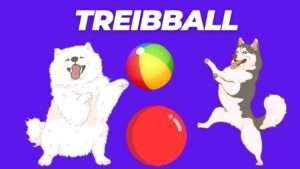
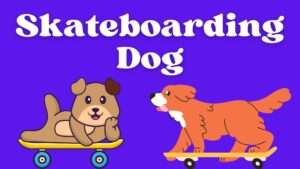
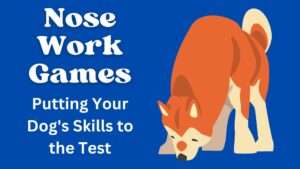

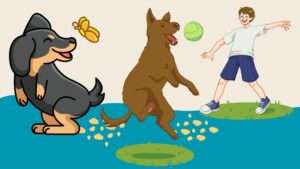


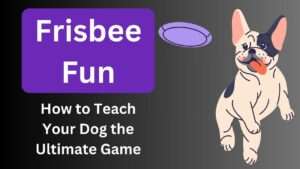









+ There are no comments
Add yours